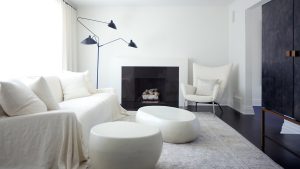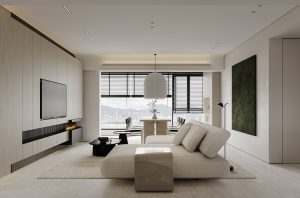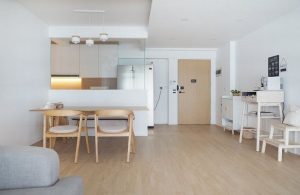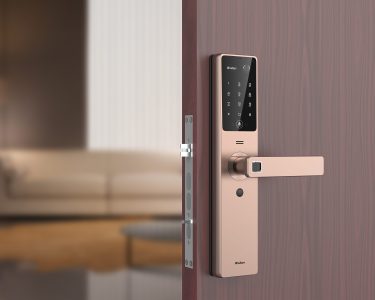Introduction
A minimalist home is more than just a design trend. It is a lifestyle that focuses on simplicity, comfort, and reducing clutter. When you step into a minimalist space, you feel calm and free, not weighed down by too many items or busy decor. Many people find that this approach not only makes their home look better but also improves their mood and reduces stress. However, how do you start living with less without feeling like you are giving up too much?
In this article, we will explore practical steps to Create a Minimalist Home. We will talk about declutter methods, the best ways to organize your space, and tips for choosing functional furniture. You will also learn about the benefits of a neutral color palette and how to maintain a clutter-free living environment. If you have ever wanted a more peaceful, simpler home, these ideas can help you get started. Whether you have a large house or a small apartment, a minimalist approach can transform any space into a calm retreat.
What Is This? Understanding Minimalism in Home Decor

Minimalism in home decor is about focusing on what is truly important and removing what is not. It is the idea of “less is more,” where you keep only the items you need or truly love. By cutting back on extra stuff, you create a space that feels open, airy, and easy to manage. You do not have to throw everything away. Instead, you carefully select pieces that serve a purpose or bring joy.
A minimalist home often features clean lines, simple shapes, and a limited color scheme. This does not mean the space is cold or boring. In fact, many minimalist homes are cozy and welcoming because they focus on quality rather than quantity. The goal is to let each item shine, instead of having too many things compete for attention. Minimalism also extends beyond furniture and decor. It is about living mindfully, using fewer resources, and focusing on what matters most.
What Is That? Steps to Achieve a Minimalist Home

Define Your Vision
Before you start clearing out your home, think about why you want a minimalist home. Are you seeking a calming environment to reduce stress? Or do you want more open space for your family to move around? Maybe you are aiming for a more sustainable lifestyle. Whatever your reasons, write them down. This clarity helps you stay motivated when deciding what to keep and what to remove.
Start Small
Jumping into minimalism can be overwhelming if you try to do it all at once. Instead, pick one area, such as a closet or a single room. Go through each item and ask if it is truly useful or if it adds value. If not, let it go. This process is called declutter, and it is a core part of minimalism. By starting small, you gain momentum and avoid feeling discouraged.
Sort and Organize
Once you have removed items you do not need, organize what is left. Think about storage solutions that keep surfaces clear but items within reach. You might use baskets, shelves, or drawers to hide away smaller things. The goal is to reduce visual clutter. If everything has a place, your home will feel tidier. Remember, clutter-free living is not about having nothing, but about having only what you need, neatly stored.
Choose a Neutral Color Palette
Many minimalist spaces use a neutral color palette like whites, grays, or soft earth tones. These colors create a calm vibe and make rooms look larger. That does not mean you cannot have color. You can add a pop of color with a throw pillow or artwork, but keep the main backdrop simple. This approach helps you focus on shape, texture, and the flow of the room. It also makes it easier to rearrange or update decor later.
Opt for Functional Furniture
In a minimalist home, each piece of furniture should serve a purpose. Look for functional furniture that has clean lines and can be used in more than one way. For example, a coffee table with storage underneath, or a sofa bed for guests, can help you save space. Avoid bulky or overly ornate pieces. By choosing items that match your style and needs, you keep your home open and uncluttered.
Maintain a Routine
Once you have created a minimalist home, you need to keep it that way. Set aside time each week to tidy up and ensure that new items do not pile up. If you buy something new, consider letting go of something old. This habit prevents your space from filling up again. A consistent routine helps you enjoy less is more living for the long term.
Tips for a Cozy Minimalist Style
Some people worry that minimalism can feel cold or lifeless. But you can have a cozy minimalism approach by focusing on warmth and comfort. Add soft textures with rugs or blankets. Use natural elements like wood or plants to bring life into the room. Personal items, such as a favorite photo or a special souvenir, can also add character without creating clutter. The trick is to pick a few items that mean a lot, rather than filling shelves with many random objects.
Table: Quick Comparison of Minimalist vs. Cluttered Spaces
| Aspect | Minimalist Space | Cluttered Space |
|---|---|---|
| Visual Appearance | Open, calm, and airy | Overloaded, busy, and chaotic |
| Focus on Essentials | Only important or cherished items remain | Many unused or unneeded items lying around |
| Cleaning & Maintenance | Quick and easy to clean and organize | Takes longer to tidy and maintain |
| Atmosphere | Relaxing, fosters clear thinking | Stressful, can distract or overwhelm |
| Personal Style | Few decorative pieces, each with meaning | Many decor items, might be random or excessive |
This table highlights the difference between a minimalist home and a cluttered one. Minimalism emphasizes quality, purpose, and calm, while clutter can cause stress and confusion.
How to Deal with Sentimental Items
Letting go of things that hold memories can be the hardest part of minimalism. The key is to decide which items truly matter. If you have a lot of sentimental objects, pick a few that have deep meaning. You can take photos of the rest to keep the memory without the physical space. Another idea is to create a memory box for letters or small keepsakes. This way, you honor the memory without letting clutter take over.
Addressing Family or Roommate Concerns

Not everyone in your household may want to embrace minimalism at first. Talk openly about why you want a minimalist home and how it can help everyone. Suggest small changes, like a shared family area that stays tidy, or a weekly declutter session. If some people prefer to keep more items, let them have a personal space for that. Flexibility and communication can help the entire household find a balance that works.
Common Minimalist Mistakes
Some beginners try to get rid of everything too quickly. This can lead to regret if you discard items you need. Another mistake is buying new things to create a “minimalist look,” which can end up being more clutter. Also, some people forget that minimalism is about mindset, not just style. Even if your home looks neat, you might be mentally overwhelmed. Focus on real clutter-free living that benefits your mind and environment, not just an Instagram-worthy image.
Maintaining Motivation

Minimalism is a journey. Over time, you might collect new items or slip back into old habits. To stay motivated, revisit your reasons for embracing minimalism. Look at how your minimalist home helps you save time, reduce stress, or enjoy your favorite things more. Reading about cozy minimalism or seeing success stories can also keep you inspired. If you find yourself slipping, schedule a weekend to declutter and refresh your space.
Conclusion
In summary, Creating a Minimalist Home involves careful declutter, thoughtful storage solutions, and a focus on what truly matters. By choosing a neutral color palette and functional furniture, you make your space feel open and calm. Embracing “less is more” does not mean giving up comfort. It means living with intention, surrounding yourself with items that have purpose or meaning. With consistent effort and a clear vision, you can maintain a clutter-free living environment that brings peace and simplicity to your everyday life. Start small, stay patient, and let the benefits of minimalism guide you toward a happier, more organized home.




